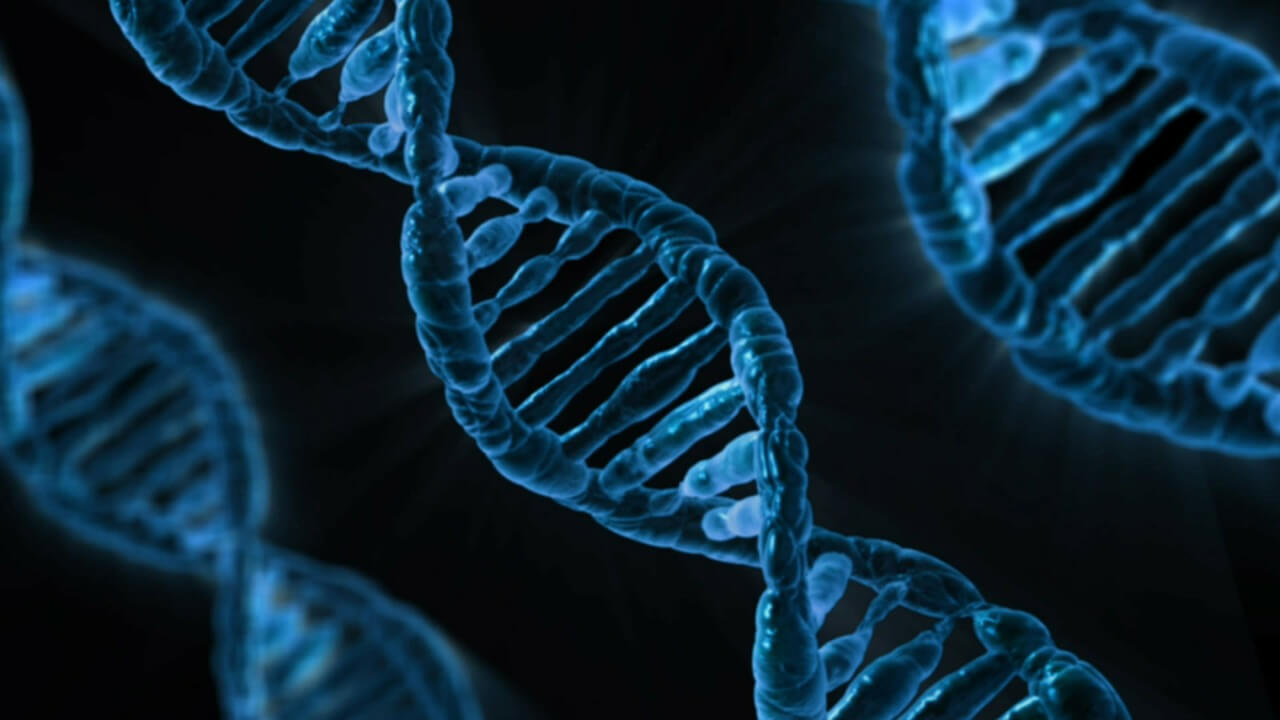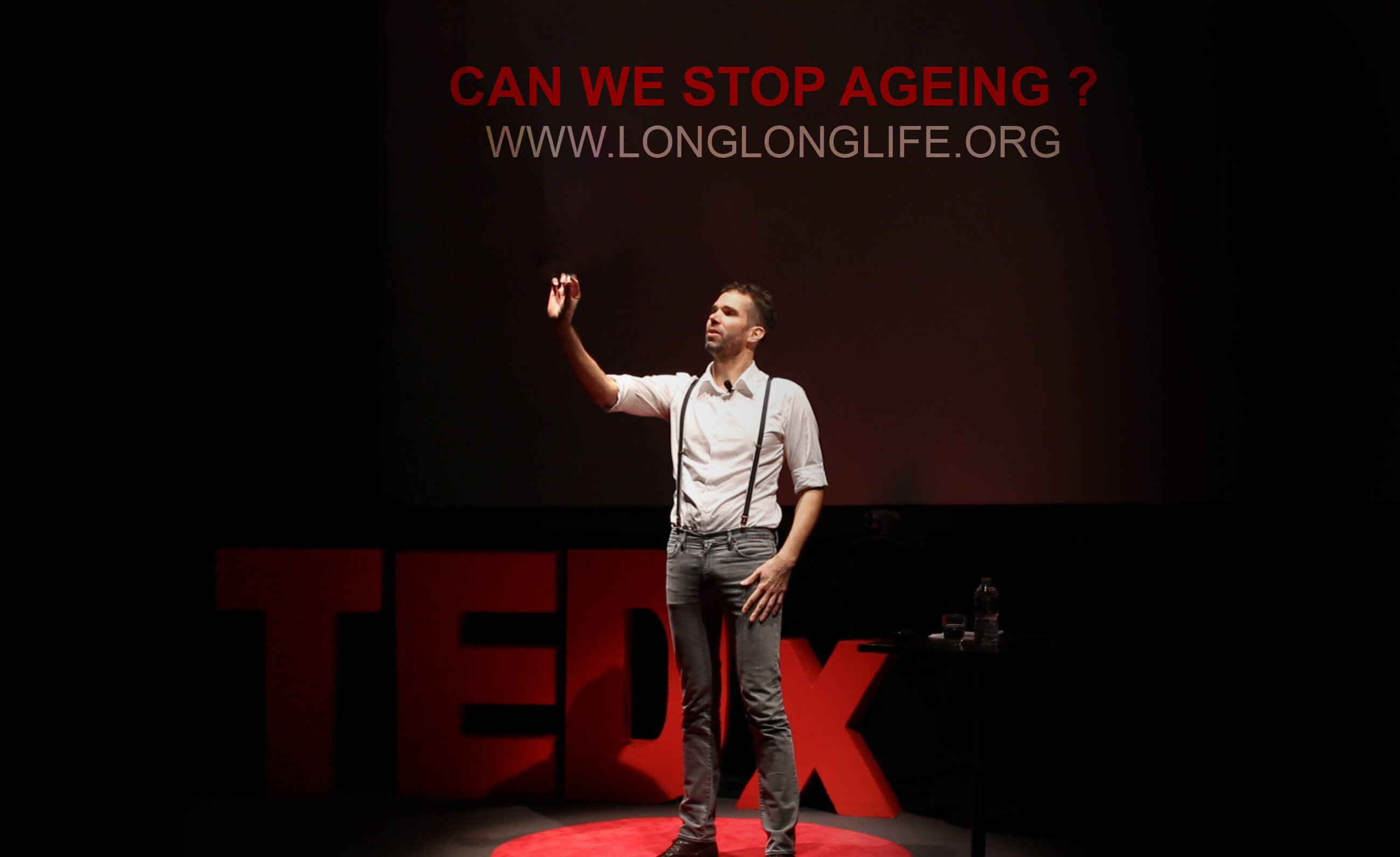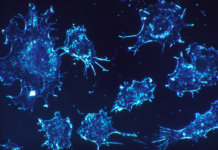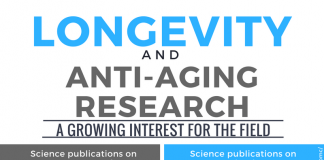TEDx conference: Transhumanism and aging
Guilhem Velvé Casquillas, former researcher, multi-entrepreneur and dedicated transhumanist, shares with us his conviction that the current technological revolution in the field of biotechnologies could make us the first generation of amortals humans with a record life expectancy of 1000 years.
Here is the video of his talk at the TEDx Atlantique Brest 2017, followed by the transcript of his speech. It is an opportunity to talk about transhumanism, research against aging, longevity, biology of aging, technological convergence, NBIC technologies and technological singularity.
Transhumanism and choice: to age, or not to age
NAD+ precursor, coenzyme Q10, resveratrol… Believe me, even today, aging treatments remain archaic. We won’t say no to a few more years, though.
I was a twenty-something like some of you when I realized we were in a tech convergence that could let us slow down and even stop human aging in the coming decades, potentially making us the first amortal generation of humans. Notice how I say amortal, not immortal. Aging or not, we won’t be able to suppress death. I still like the idea of not having an expiration date. That’s why I dedicated my life to one thing: giving the choice. Giving humanity the choice, as quickly as possible, to be able to live, or die. To each person to age, or not.
I spent many reluctant years in school, and despite my reservations I became an engineer, got a physics PhD, a biology post-doc: the ideal CV to stop human aging. Plus, researcher is a fantastic job, you get to be your inner child. Researchers push back the limits of science by playing with 100K€ legos. Terrific. I quickly realized though that it wouldn’t help at all to reach my life goals. I was in public research, and I quit everything to start a slew of innovative biotech startups. That’s how much I believed in my project, imagining we will live many years, to throw ten years of education out the window.
I was stumped, though, because since I realized we could create the first generation of amortal homo sapiens, nothing else mattered, everything seemed insignificant, including developing a new iPhone. And I was afraid, I’m still afraid. You should probably be as well. Who knows what humankind will do with the power to tweak the human genome? Who can tell me today with 100% certainty that the benefits will outweigh the risks? This will depend on the decisions of our politicians in 20, 30, 40 years, it will depend on those voting for them, which means you, and I don’t know you!

That’s why I’m afraid.
Still, I’ve made my choice, because it is today that it get decided in labs if in the next 20, 30, 40 years people will be able to chose to age or not, and I decided I would not steal that freedom from them.
Stop human aging with transhumanism: sure, but how?
Thankfully for all of us or it would have taken forever, I saw I was not alone and that a worldwide revolution in happening in the field of anti-aging research. Have you ever wondered why Google invested $1.5Bn to “kill death” and stop human aging? Or why Mark Zuckerberg, Facebook founder, invested $3Bn as well, to eradicate human diseases before the end of the century? Especially, what makes them think that their investments will be worth it in the next few decades? I’ll let you think and we’ll get back to that later.
Aging in History
Take a look, human life expectancy has not changed in the past 40,000 years. Not a bit. Except in the past 150 years, when we suddenly gained 6 hours of life expectancy per week. For the party people and late morning lovers among you, that’s one extra week-end per week, and that’s something. I noticed that meanwhile, human longevity has not budged at all – I’m talking about the maximum age a person can reach. We’re stuck at 120 years old. What’s incredible is that this expiration date was written into the Gospels. Let me quote: ““My Spirit shall not abide in man forever, (notice my automatic baritone voice when I speak for God) for he is flesh: his days shall be 120 years.” Genesis, chapter 6, verse 3. I was not impressed with every page of the Old Testament, but I don’t know how they guessed this one. Impressive.
A definition of aging

What we need to know today, is what limits the human life expectancy, and our longevity. As we will see, it’s aging. A kind of self-destruction program we all carry in us, that gets switched on around the age of 20 and leads to a certain death a hundred years later, around 120 years old.
Actually, during your 20th year, you have one out of a thousand chances to die. Take it as good or bad news, you decide, just know that the causes are mainly suicide, infectious diseases and accidents. What I make of it is that without aging, our average life expectancy in France would be of 1,000 years. This also works for animals, almost all of them. Whether you’re a mouse or a man, from a certain age, your chances of dying grow exponentially. Men, from the age of 20, your chances to die that year double every 7 years. Let me tell you, it goes up fast near the end. This, however, was true of homo sapiens 1.0, and we’re here to see what might change. There are, on Earth, species that don’t seem to age at all. Such as the lobster. Or the clam, as well.
Also, pardon the proselyte in me for a moment: I am urging the whole scientific community to start again researching the secrets of clams and their little friends, so we can understand how they do it and use what works for ourselves!
Aging, the deadly disease transhumanism fights against
That big spaghetti mess shows everything that can kill you and how likely they are to happen each year of your life. I know that’s a lot, but you can see that they all go up in pretty much the same way with time, almost all of them. The good news is that I studied the list carefully, and listening to one of my talks is not one of them. So relax, for the next 15 minutes, as long as you’re with me, you’re safe.
The 2nd thing to learn from this, is that from a certain age, if you eradicate one class of disease, another one will immediately take over. If you eradicated cancer altogether, in the whole of humanity, life expectancy would only go up 3,5 years. It’s sad, but as JFK said, don’t let it take you down, and if you wish like me to radically increase the human life expectancy, don’t limit yourself to the consequences, target the causes. You will tell me it’s been proven that from age 20, one can die from cancer or Alzheimer’s disease. The numbers remain pretty insignificant, when you look at it and see these mortality causes grow with time, there has to be one main cause to these diseases, and it is time. Aging. Today, my questions are not about the spaghetti mess behind me. My questions are about whether humanity already has the technology to reprogram this genetic self-destruction code in the next few decades.
Dodging aging with transhumanism
The good news is that the current revolution in biotechnologies is giving us, for the first time in human history, a real chance to slow down and even stop human aging. Medicine has advanced more in a century than in the whole human history. This is even more true of the past 20 years. Today, it is nearly impossible for a doctor to stay on top of a field, even their own. Actually, since we’re here, if you ever have a serious disease, I’d advise you to pick your doctor like you would your hairdresser: if you want a good result, pick the right one. But I digress. Let’s discover together what the future has in store for us, with these wonderful biotechnological tools.
The data of aging for transhumanism
First, when you reprogram a genetic code to stop human aging, you need to identify the genes that are to blame. This is when our first biotechnological, revolutionary tool comes in: genetic big data. The possibility to sequence, which is to read, the whole genome of an individual, for a very good price. Since the first human genome sequencing in 2003, the cost has dropped by 3 million. Today, you can sequence your genome for less than €1,000, and millions of people have done it, as I have. Reading those millions of genomes, coupled to an adequate A.I. will allow us to connect the dots between each gene, each disease, and the life expectancy of a patient. You would say that knowledge isn’t enough, and we need to edit the genes. This is when the second biotechnology tool comes in. Gene therapy. Gene therapy more or less consists in editing a patient’s genome by inserting a gene in it.
Anti-aging gene therapy in an era of transhumanism
Take a genetic disease, like sickle-cell anemia. Gene therapy will inactivate the gene to blame and replace it with a functional gene. The end result is that you won’t have sickle-cell anemia anymore. Although some find it fascinating. I’m sure that you will be more interested in gene therapy when we find a hangover gene. We’ll talk about it then.
Some of you could object that gene therapy has been around since the early 80s. Yes, it has, but back then there was a problem: we couldn’t control where to insert the new gene in a patient’s genome. That made for catastrophic results. It’s somehow like using a word at random in a sentence. It could make sense, but it’s a long shot. Randomly inserting a gene in a genome is pretty similar. This field underwent a revolution in 2012 with CRISPR-Cas9, a technology that lets us edit a gene however we like, wherever we want in a patient’s genome.
From my perspective, CRISPR-Cas9 alone wouldn’t suffice to stop human aging, but the field is progressing at an incredible pace. Five years later we have more than 2,000 gene therapies in the clinical testing phase, mainly to cure cancer. That’s twenty times the number of antibiotics being clinically tested, it’s a tidal wave, which is typical of the biotech revolution. It’s incredibly fast. We already have two tools that could somehow help us slow down human aging, and maybe even stop it. However, it would be better to avoid the mistakes we always make when faced with great discoveries. In the early twentieth century, we discovered radioactivity. Two decades earlier, we were sure that this magical energy could cure anything. I dug up some period advertisement, let’s see. There was the fad of radioactive soda, giving you the infinite energy of an atomic battery. Or the radioactive suppositories, to treat male impotence. Well played. I think it peaks here with the woolen, self-heating radioactive baby jackets. Don’t worry, the fad soon died down, but it shows we’ll need to avoid these traps and test quickly and efficiently all experimental treatments for aging.

Transhumanism, aging and humans-on-chips
This is where the third biotech tool comes in. Humans on chips. Again, don’t worry, I won’t ask you to grow miniature humans on little chips, I’m not Gargamel and I don’t torture smurfs. Humans on chips aim to replicate as closely as possible the way a human organism works, by cultivating human cells on microfluidic chips such as this one. The field boomed a few years ago with the discovery of induced pluripotent stem cells. This technology allows us to turn a patient’s skin cells into cells for any other organ. Liver, lungs, heart, brain. Once arranged in a smart way, those human cell cultures become multi-organs on chips, or humans on chips. This is how we will quickly and efficiently test anti-aging treatments, by limiting as much as possible testing on humans and animals alike.
Isn’t it more efficient, and faster, than experimental testing on someone who will have to grow old for 70 years before we can compare notes? Humans on chips will be essential : we will have to modify dozens, hundreds of genes in a patient to fully stop the aging process. This is where humans on chips become vital. To test out the millions of gene therapy combinations necessary to find the most efficient one.
Three tools of transhumanism to fight aging
So here we are, we have 3 biotechnological tools that could allow us to slow down and even stop aging in the coming decades. Genetic big data, to identify the genes responsible for the aging process. Gene therapy, to subsequently edit a patient’s genome. And humans on chips, to test the millions of necessary gene therapies in order to find the best one. For most of you, I imagine that the subject is somewhat new, and demands to keep an open mind. However I’m sure of it, open mind isn’t synonymous with a broken head, and has no place in our bundle of spaghetti. You’re not taking any risks by taking an interest in the subject.
Stopping aging: why not?
I think some of you already know the the answer to the question we had when I began. Why did Google and so many Silicon Valley companies invest billions to stop human aging? Well, just because they think it will work. If, like me, you want to quickly give humanity a choice, and you don’t have to, you don’t have to invest billions of euros, just become interested in the subject, talk about it to people around you. When they hear about it again and again, politicians will understand there is an interest for the subject among the population. We need to understand that today, almost all our budgets go to treating the consequences of aging: Alzheimer’s disease, cancer, heart attacks. If we agreed to give one thousandth of those sums spent on the consequences, this time to treat the causes of aging, we would have a worldwide budget of eight billion euros a year. I am convinced that with such a budget, everything would be possible. Including the pleasure to see you all here again, healthy, in 3017.
Dr Guilhem Velvé Casquillas

Author/Reviewer
Auteur/Relecteur
Physics PhD, CEO NBIC Valley, CEO Long Long Life, CEO Elvesys Microfluidic Innovation Center
More about the Long Long Life team
Docteur en physique, CEO NBIC Valley, CEO Long Long Life, CEO Elvesys Microfluidic Innovation Center
En savoir plus sur l’équipe de Long Long Life



![[Video] Eurosymposium on Healthy Ageing, Brussels, 2018 Eurosymposium on Healthy Aging](http://www.longlonglife.org/wp-content/uploads/2019/07/P1310252-218x150.jpg)










